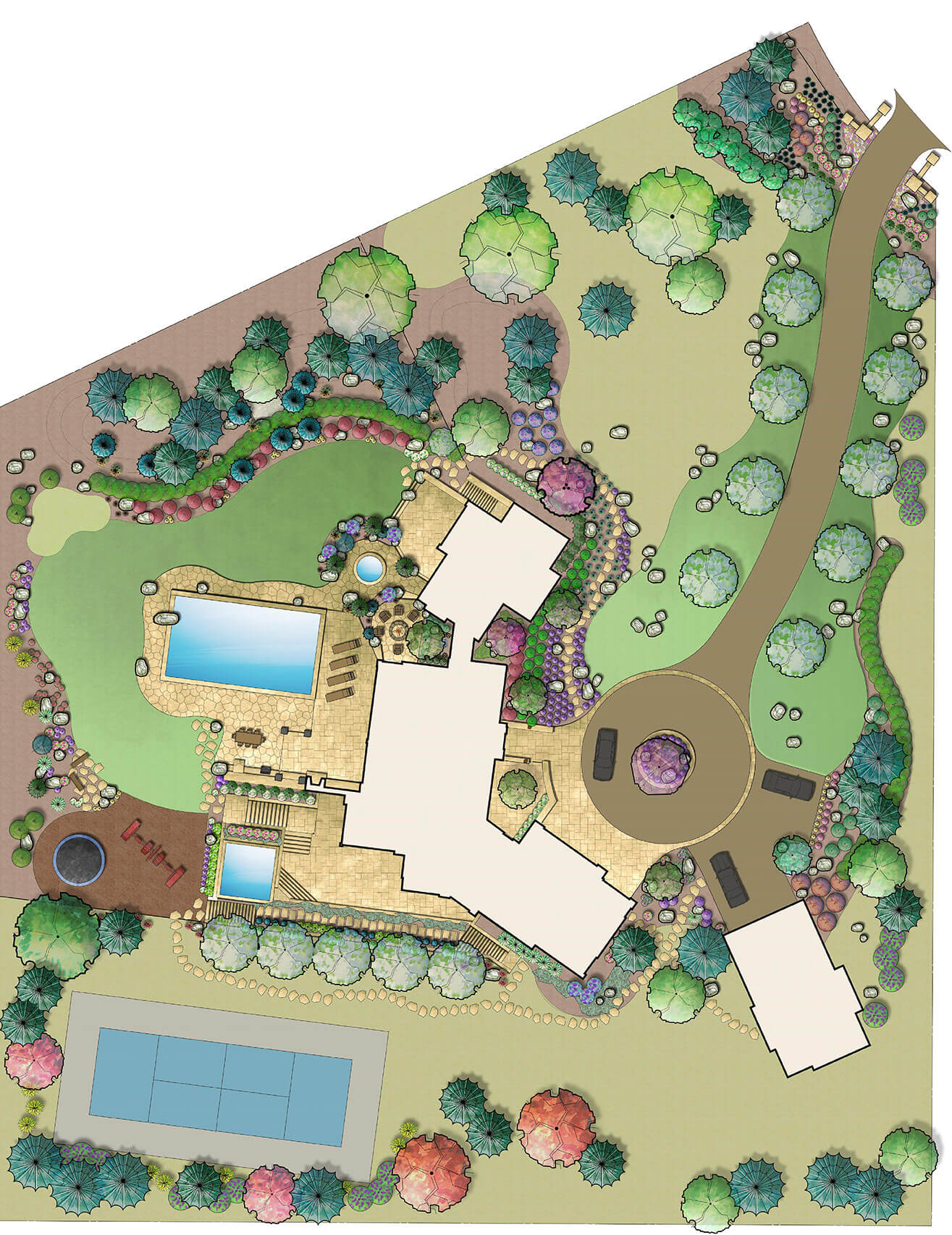Landscape design is much more than just planting a few flowers or trimming the lawn; it is a blend of art and science that transforms outdoor spaces into useful and aesthetic environments. Whether you are improving your home’s curb appeal or establishing a friendly atmosphere for your business, investing in professionally designed landscaping can yield considerable returns. This manual will help you explore the world of landscaping, introducing you to the many aspects that play a crucial role in achieving a beautiful and lush outdoor space.
From comprehending the advantages of employing a landscaping service to examining the most common errors and how to prevent them, this comprehensive guide covers all you need to know. We will delve into essential topics like lawn care and maintenance, garden design and plant selection, hardscaping, seasonal landscaping tips, and sustainable practices that make your yard not only visually appealing but also environmentally friendly. Whether you are a DIY enthusiast or thinking about enlisting professional help, we have insights and tips that cater to all skill levels. Join us as we explore how to enhance your outdoor spaces and create a landscape that you can be proud of.
The Benefits of Quality Landscaping

Financing quality landscaping provides homeowners and businesses not just visual appeal as well as significant financial returns. A carefully planned landscape design can increase property value considerably, with studies indicating that quality landscaping can add nearly 15% to the overall worth of a home. This investment in external beauty not only draws in potential buyers and can also create a sense of pride and satisfaction for existing owners.
Beyond boosting property value, engaging a landscaping service gives expertise that guarantees both functionality and innovation in design. Expert landscapers bring knowledge of nearby weather patterns, soil types, and native plants, allowing them to create a landscape that thrives year-round. This level of expertise commonly results in landscapes that are both stunning but also sustainable and tailored to the specific needs of the environment, which is crucial for longevity and maintenance.
Furthermore, quality landscaping frees up important time for homeowners and business owners. The challenges involved in design, plant selection, and ongoing maintenance can be daunting and labor-intensive. By entrusting these responsibilities to experienced landscapers, property owners can appreciate their outdoor space effortlessly, which ensures that every element from lawn care to hardscaping is managed efficiently and effectively.
Crucial Lawn Maintenance Practices
Ensuring the health of a vibrant lawn requires ongoing care and dedication. One of the key essential techniques is frequent cutting. Maintaining your grass at the ideal height not only improves its look but also encourages root growth and reduces weeds. It's vital to mow with well-maintained blades to ensure smooth cuts, which can prevent diseases. A common recommendation is to not exceed more than one-third of the grass height at once, as this can weaken the plants.
Fertilization is another critical element in lawn care. Using the suitable type of fertilizer, based on soil tests, helps in supplying the essential nutrients your lawn needs to succeed. The timing of applications is also vital; usually, a early season application helps in revitalization from the cold months, while autumn fertilization prepares the lawn for the impending colder months. Consistently testing your soil can help you understand nutrient deficiencies and fine-tune your fertilization schedule as needed.
Watering plays a significant role in keeping your lawn vibrant and healthy throughout the year. Proper watering methods, such as thorough watering on a less frequent basis, encourage deep root systems that are better able to withstand drought. It's ideal to water early as this reduces evaporation and enables the grass to get moisture before the heat of the day. Monitoring rainfall and modifying your watering timing can make a significant difference in maintaining a lush landscape.
Eco-Friendly Gardening Practices
Incorporating eco-friendly landscaping solutions is important for establishing a sustainable outdoor environment while improving the aesthetic of your property. Selecting local plants is one of the most effective strategies; these species are adapted to the local climate and soil conditions, requiring less water and maintenance compared to exotic varieties. Native plants also foster biodiversity by providing habitats for local wildlife, such as pollinators and other beneficial insects, which adds to a more robust ecosystem.
Another key aspect of eco-friendly landscaping is the adoption of water-efficient practices, such as xeriscaping. This approach centers around designing landscapes that minimize water consumption through the selection of drought-resistant plants and the strategic placement of hardscaping features. Adding rain gardens and permeable paving can also help manage stormwater runoff, allowing water to soak into the ground instead of contributing to erosion and pollution. These practices not only diminish water use but also improve the visual appeal of your yard.
Finally, sustainable landscaping often features organic gardening techniques, such as composting and natural pest control. By using her comment is here and practicing integrated pest management, you can maintain a thriving landscape without depending on harsh chemicals. This not only supports the well-being of your plants but also protects local waterways and wildlife from harmful runoff. Adopting these eco-friendly landscaping solutions ensures your outdoor space stays vibrant while minimizing your overall environmental impact.
